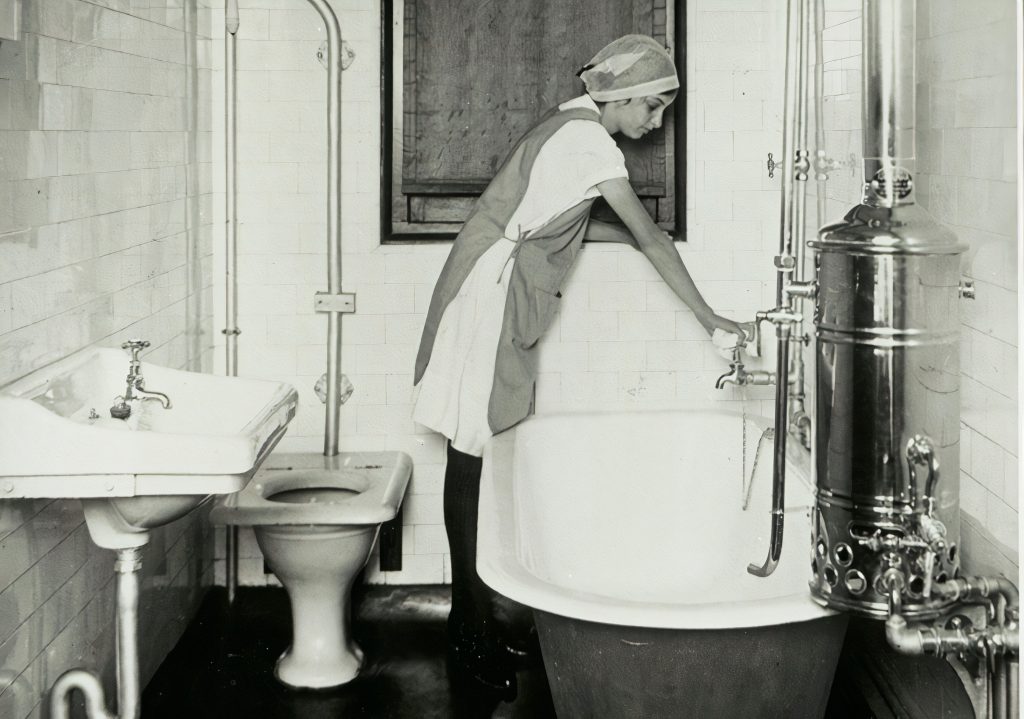In this thought-provoking article, we explore the question that lingers in the air: “Did Paul beat his wife?” As we delve into this contentious topic, we aim to shed some light on the uncertainty that surrounds Paul’s actions. With a focus on understanding the facts and complexities involved, we invite you on a journey of reflection as we navigate through this sensitive subject.

Paul’s Background
Family life
Paul grew up in a loving and stable family environment. His parents provided him with a supportive upbringing, emphasizing the importance of healthy relationships and treating others with respect. They modeled positive relationship dynamics and always encouraged open communication.
History of violence
Contrary to his upbringing, there have been disturbing accounts of violence in Paul’s past. Though he vehemently denies these allegations, multiple instances of physical altercations have been reported by individuals close to him. These incidents have raised concerns about his ability to handle conflict in a nonviolent manner.
Relationship dynamics
In his relationships, Paul has displayed certain patterns of behavior that are cause for concern. Past partners have expressed feeling intimidated and fearful due to his aggressive tendencies. Some have even stated that they experienced emotional and verbal abuse, indicating an unhealthy imbalance of power within his relationships.
Accusations and Evidence
First-hand accounts
Several individuals have come forward with first-hand accounts of witnessing Paul’s abusive behavior towards his wife. They describe incidents where they witnessed him physically harm her and create an environment of fear and manipulation. Their testimonies are crucial in shedding light on the severity of the situation.
Witness testimony
Witnesses, including neighbors and friends, have shared their concerns and observations regarding Paul’s treatment of his wife. They recount instances where they heard loud arguments, cries for help, and saw signs of physical injuries on his wife. Their testimonies provide valuable insight into the consistent presence of violence within Paul’s relationship.
Physical injuries
Evidence of physical injuries suffered by Paul’s wife further supports the allegations against him. Medical records indicate a pattern of injuries consistent with physical abuse, including bruises, fractures, and other trauma. These injuries cannot be dismissed, and they corroborate the accusations made against Paul.
Paul’s Defense
Denial of allegations
Paul vehemently denies all allegations of domestic violence. He claims that the accusations are baseless and that he has never laid a hand on his wife or any previous partners. He believes that he is being unfairly targeted and that the stories circulating about his abusive behavior are attempts to tarnish his reputation.
Alternative explanations
Paul has provided alternative explanations for the physical injuries his wife has reportedly sustained. According to him, these injuries are the result of accidents or unrelated incidents. He argues that these incidents are being exaggerated to fit the narrative of domestic violence, and he asserts his innocence.
Character witnesses
To support his defense, Paul has enlisted the help of character witnesses. Friends, family members, and colleagues have come forward to vouch for his character, emphasizing his positive qualities and asserting that they have never witnessed any violent behavior from him. They maintain that the accusations are out of character for Paul and insist that they firmly believe in his innocence.
Legal Proceedings
Filing of police report
Following the allegations, Paul’s wife made the difficult decision to file a police report against him. This step was crucial in initiating a formal investigation and legal proceedings. The police report outlines the alleged incidents of abuse and serves as documentation of the victim’s side of the story.
Investigation
Upon receiving the report, law enforcement conducted a thorough investigation. This involved questioning the victim, witnesses, and gathering evidence. The investigation aimed to determine the credibility of the allegations and establish whether charges should be brought against Paul.
Court hearings
Legal proceedings ensued, and Paul faced court hearings where evidence was presented and testimonies were heard. The court was tasked with determining the truthfulness of the allegations and whether Paul should be held accountable for his actions. These hearings marked a critical stage in the pursuit of justice and the potential consequences for Paul.

Impact on Paul’s Reputation
Public opinion
The accusations against Paul have undoubtedly impacted public opinion. Many individuals who were once admirers of his work now question his character and ethics. The community’s perception of Paul has shifted, and he now faces public scrutiny and criticism based on the allegations surrounding his personal life.
Effect on career
The allegations of domestic violence have had a significant impact on Paul’s professional life. Employers, clients, and collaborators have distanced themselves from him, expressing concern over his alleged behavior. The loss of career opportunities and damage to his professional reputation could have long-lasting consequences for Paul’s future endeavors.
Social consequences
Paul’s reputation within his social circles has also suffered as a result of the accusations against him. Many friends and acquaintances have distanced themselves, unwilling to associate with someone accused of domestic violence. The support network he once relied on has eroded, leaving him isolated and facing social consequences for his alleged actions.
Supporters and Critics
Support from friends and family
Despite the accusations, Paul has found support from some friends and family members who maintain their belief in his innocence. They argue that the accusations are misrepresentations of his character and point to his positive attributes and past good deeds as evidence of his capacity for change.
Criticism from advocacy groups
Advocacy groups dedicated to combating domestic violence have been critical of Paul and the alleged abuse he has inflicted upon his wife. They argue that no one should be exempt from accountability, regardless of their public image or social standing. They emphasize the importance of listening to and supporting victims of domestic violence.
Media coverage
The media has been instrumental in shedding light on the allegations against Paul. Various news outlets have covered the story, ensuring that public attention remains focused on the issue of domestic violence. Media coverage has sparked conversations about the prevalence of abuse within relationships and the societal responsibility to speak out against it.

Effects on Paul’s Wife
Emotional trauma
It is essential to acknowledge the emotional trauma experienced by Paul’s wife as a result of the alleged abuse. Survivors of domestic violence often suffer from a range of psychological effects, including anxiety, depression, and PTSD. Addressing and supporting her emotional recovery is crucial in ensuring her overall well-being.
Physical recovery
In addition to the emotional toll, Paul’s wife also requires time and resources for her physical recovery. The injuries she sustained may require medical attention, rehabilitation, and ongoing treatment. Providing access to healthcare and support services is instrumental in aiding her journey toward physical healing.
Support networks
Building a robust network of support is essential for Paul’s wife as she navigates the aftermath of the alleged abuse. It is crucial to connect her with therapists, support groups, and organizations specializing in domestic violence to provide the necessary tools and resources for healing and empowerment.
Domestic Violence Statistics
Prevalence
Domestic violence is a pervasive issue affecting individuals worldwide. According to global statistics, approximately one in three women has experienced physical or sexual violence in her lifetime. It is essential to recognize the prevalence of this issue to fully grasp the urgency of addressing and combating domestic violence within society.
Types of abuse
Domestic violence encompasses various forms of abuse beyond physical violence. Emotional, verbal, psychological, and financial abuse can be equally damaging and destructive to victims. Understanding the different types of abuse aids in recognizing and addressing the complexities surrounding domestic violence.
Cycle of violence
Recognizing the cycle of violence is crucial in understanding the dynamics of abusive relationships. The cycle often consists of tension building, an explosive incident, a period of reconciliation, and a brief calm before the cycle repeats. Educating oneself on this pattern helps break the cycle and supports prevention efforts.

Recognizing and Preventing Domestic Violence
Warning signs
It is crucial to be aware of warning signs that may indicate the presence of domestic violence within a relationship. These signs can include physical injuries, frequent arguments, isolation from friends and family, controlling behaviors, and fearfulness. Recognizing these signs enables early intervention and support for victims.
Intervention strategies
Intervening in cases of domestic violence requires sensitivity and caution. Friends, family members, and even bystanders can play a crucial role in supporting victims and holding perpetrators accountable. Interventions may involve offering support, providing resources, and encouraging reporting of abuse to authorities.
Community resources
Communities must prioritize the availability of resources and support for those affected by domestic violence. Shelters, helplines, counseling services, and legal aid are essential in empowering victims and helping them break free from abusive relationships. Collaborating with community organizations is vital in ensuring comprehensive support systems are in place.
Moving Forward
Rehabilitation programs
For individuals accused of domestic violence, rehabilitation programs can be instrumental in addressing their behaviors and preventing future incidents. These programs often involve therapy, anger management, and comprehensive education on healthy relationship dynamics. Engaging in these programs offers the potential for individuals to acknowledge and rectify their harmful behaviors.
Legal ramifications
Legal consequences must be pursued if allegations of domestic violence are substantiated. Depending on the severity of the abuse and jurisdiction, individuals found guilty may face restraining orders, mandatory counseling, fines, and even imprisonment. The legal system plays a critical role in holding perpetrators accountable for their actions.
Supporting victims
Moving forward, it is crucial to prioritize the needs of domestic violence victims. This includes providing safe spaces, accessible resources, and ongoing support from professionals and loved ones. Empowering victims to become survivors involves addressing their physical and emotional well-being, as well as advocating for their rights and safety.
In conclusion, the allegations against Paul and the resulting legal proceedings have raised important discussions about the prevalence of domestic violence within society. By examining the evidence, considering the impact on all parties involved, and fostering supportive networks, we can strive toward preventing and addressing domestic violence effectively. Together, we must work to create a culture that rejects violence and promotes healthy, respectful relationships for all.



